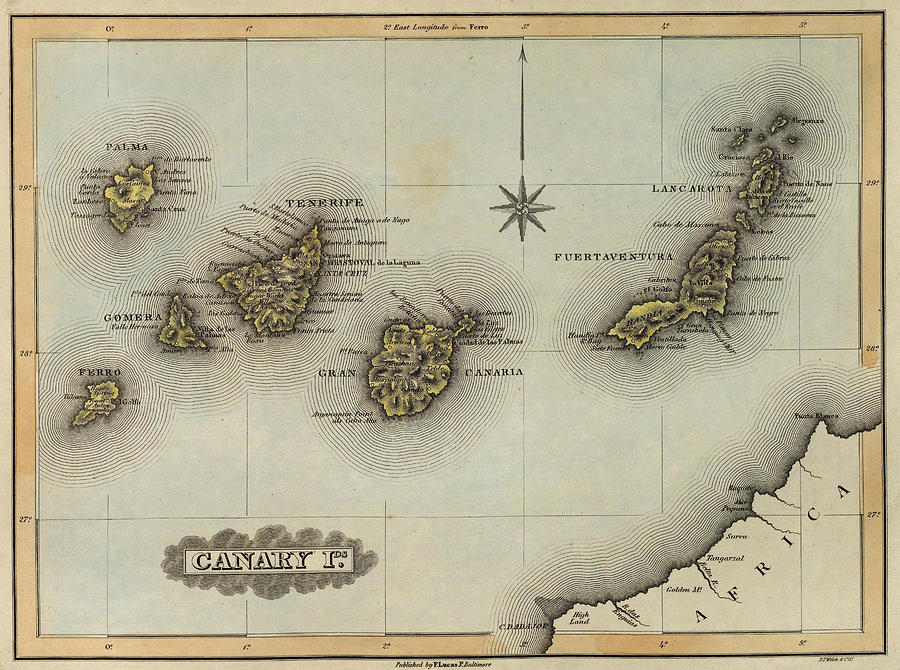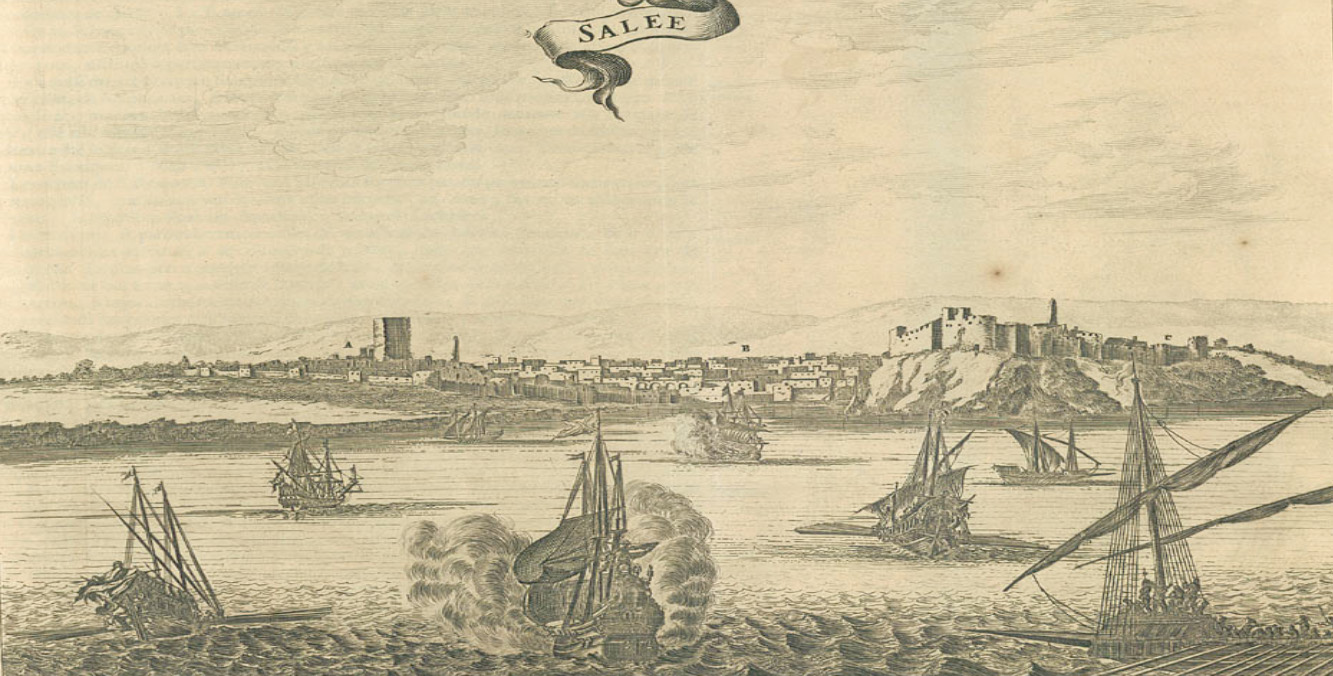(This post is a continuation of The Story of Juan Rodelgo – Part 1. If you haven’t done so already, it’s best to read that post before continuing on here.)
In the 1620s, when Juan Rodelgo made his overland trek, Morocco was wracked by civil war as the sons of the deceased sultan fought each other for control of the throne. The conflict was so brutal that one chronicler described it as dreadful enough to make the hair of a suckling infant turn white.
To reach Salé, Juan had to hike alone the better part of 200 miles (320 kilometers) through rough and dangerous country that he did not know, all while avoiding any contact with the local inhabitants—who would have killed him on sight. The trip must have involved many weeks of tense and grueling travel, but somehow he made it, probably by doing what he had done when approaching Tangier—walking at night and hiding out during the day.
When he finally reached Salé, he was sick and exhausted.
In the 1620s, Salé was a thriving corsair port with a bustling harbor and a growing fleet. The city was located on the south bank of the Bou Regreg river which flows northwestwards from its headwaters in the Middle Atlas Mountains and empties into the Atlantic Ocean about 170 miles (275 kilometers) south of the Strait of Gibraltar. Another settlement stood on the Bou Regreg’s north bank. Today, the city on the south bank is known as Rabat, and that on the north as Salé (a little confusing, I know). In Juan’s day, however, the settlement on the south bank, the corsair port, was called Salé. It consisted of a fortress on the headland overlooking the sea, known as the Kasbah (from the Arabic al‑Qasaba, meaning “the Fort”) and the main town below. The total population was perhaps 15,000.
In the image above, you can see the Kasbah fortress on the right, with the town spreading along the south bank of the Bou Regreg behind and below it. The tower that appears behind the northern settlement is actually located some distance inland on the south bank. It is Hassan Tower, the minaret of a grandiose mosque begun in the late twelfth century but never completed.
It took Juan some time to recover from his overland journey, but as soon as he was able, he signed on as a soldier aboard a corsair ship. The expedition he was part of cruised the waters between the Canary Islands and the Atlantic coasts of Morocco and the Iberian Peninsula—the traditional hunting ground for corsairs operating out of Salé—and captured three ships, one of which was transporting a number of passengers from the Canary Islands. The corsairs then headed for Gran Canaria (the largest of the Canary Islands), to ransom these passengers, a procedure that avoided the complications and potential pitfalls of hauling the captives back to Salé and conducting long-distance ransom negotiations—something both sellers and buyers could benefit from.
Before starting the ransoming process, the corsairs first made landfall in a sheltered bay on Gran Canaria’s southwest coast to take on water. Juan was part of the shore party. This was exactly the sort of opportunity he had been waiting for. He bolted and fled inland.

Map of the Canary Islands. Gran Canaria is in the center. Las Palmas is located at the northern tip of the island, at the base of the small peninsula that juts out northeastwards.
Juan was recognized as an escapee and brought before the Inquisitional authorities in Las Palmas, at the north end of the island. During his initial interrogation, Juan lied and claimed he was an escaped Christian slave rather than a renegado. As a slave who had stalwartly maintained his Catholic faith throughout his captivity, he would have been accepted by the Inquisitors with little trouble. As an acknowledged renegado, however, he would have been subject to a full Inquisitional trial, since apostasy (renouncing one’s faith) was a serious crime. Juan clearly wished to avoid such a trial. The Inquisitors believed his story—escaped captives were far from rare on the Canary Islands at this time—and they let him go.
Las Palmas had a long history as an important port of call for ships sailing to and from the New World (Christopher Columbus stopped there to have the Niña, one of the three ships in his little expedition, refitted). Juan’s plan was to find a ship that was headed to the Spanish territories in the New World and sign on as crew. There was no shortage of such ships. He just needed a little time to find one and make arrangements.
He did not have that time.
The corsair captains commanding the expedition he had been part of dropped anchor outside Las Palmas and let it be known that they had captives to ransom. The local authorities rowed out and began negotiations. The haggling lasted many days, though. In the process, the participants ended up talking—gossiping—about a variety of things. One of the corsairs mentioned a Spanish renegado who had recently jumped ship while they were taking on water at the south end of the island. Word got around. One of the corsair captains let it be known that he was willing to trade four Christian captives for Juan, so that he could to get him back and hang him.
The Inquisitors heard about all this (the whole town must have heard about it), and they promptly had Juan arrested and brought before them for a second interrogation. This time, facing the threat of torture, he confessed the truth—or whatever version of the truth he thought the Inquisitors wanted to hear.
If the Inquisitors had applied the full rigor of the law, they could have sentenced Juan to be burned at the stake, along with other luckless apostates and heretics, in a public auto da fé (act of faith). As it turned out, though, they were surprisingly lenient. After forcing the whole story out of him, the Inquisitors merely sentenced him to several months’ penance/religious instruction in a nearby monastery, and then eventually granted him an official pardon and a travel pass and shipped him off back to his home in La Mancha.
Presumably, Juan Rodelgo returned to his family’s farm, having had more than enough of a life of adventure. We don’t know for sure, because he disappears from history at this point. Chances are good, though, that he took up the ordinary life of a farmer, married, had children…. and that today, somewhere in Spain, perhaps even in La Mancha, his descendants still live. In all likelihood—since very few people have ever read the transcript of Juan’s trial or know of his story—they are completely unaware of their ancestor’s adventures.

Corsairs and Captives
Narratives from the Age of the Barbary Pirates
View Amazon listing
The Travels of Reverend Ólafur Egilsson
The story of the Barbary corsair raid on Iceland in 1627
View Amazon listing